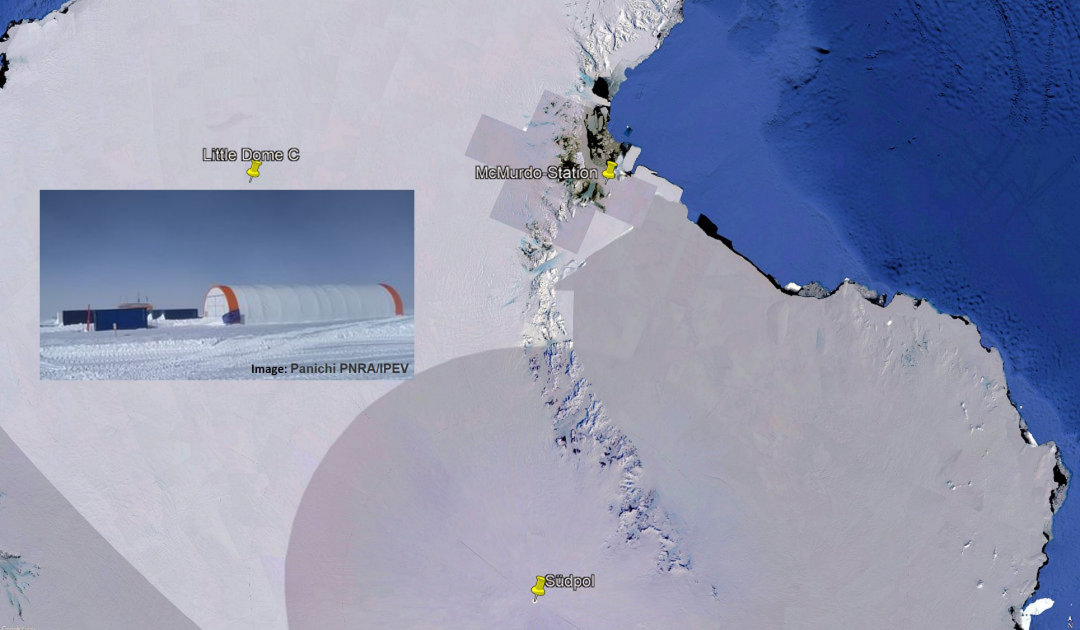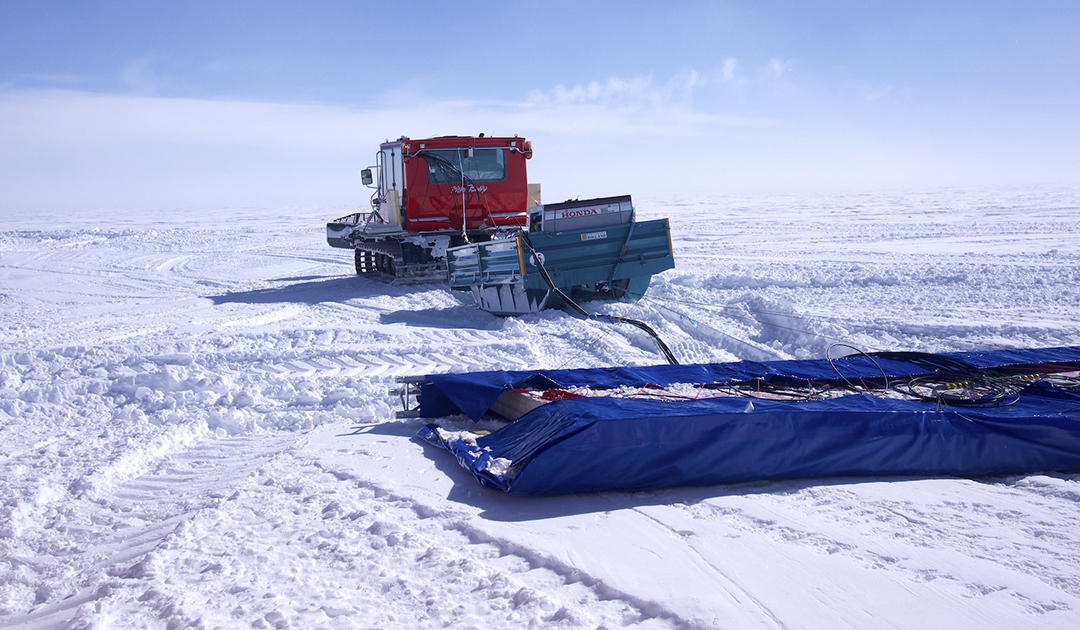
The climate and environmental history of our planet is archived in the ice: It contains information about the temperature development and the composition of the atmosphere from centuries and even millennia ago. An international research team wants to decipher this information in the Beyond EPICA-Oldest Ice project – using a drill core from the deep ice of Antarctica that contains climate data from the last 1.5 million years. Among them: researchers from the Alfred Wegener Institute. Now the first drillings begin.
By January 2022, the scientists hope to bring up the first meters of an ice core at Little Dome C. The ten-square-kilometre area is about 40 kilometres from the Italian-French Concordia station in East Antarctica, one of the most extreme places on Earth. The drilling will take place at an altitude of 3233 meters above sea level, at average Antarctic summer temperatures of minus 35 degrees Celsius. In the coming seasons, the team intends to achieve a drilling progress of 170 metres per week until, after three Antarctic summers from mid-November to early February each year, it encounters ice up to 1.5 million years old at a depth of about 2500 metres. The ice contains air bubbles from which the researchers can determine the content of greenhouse gases such as methane and carbon dioxide in the atmosphere of the past.
The project coordinator, Prof. Carlo Barbante, Director of the Institute of Polar Sciences of the Italian National Research Council (Cnr-Isp) and Professor at Ca’ Foscari University in Venice says: “During our previous EPICA project (European Project for Ice Coring in Antarctica), which ended in 2008, we succeeded in recovering and analysing an 800,000 year old ice core. Now we are trying to travel even further back in time: Because if we want to gain a correct perspective on current climate change in the world and develop appropriate mitigation strategies, we need to look back even further – and that’s what we’re trying to do in Antarctica with Beyond EPICA.”

In the first phase of the project, the consortium led by the Alfred Wegener Institute, Helmholtz Centre for Polar and Marine Research (AWI) spent three years searching for a location where the ice is so cleanly layered, even at great depths, that it can provide valuable results. “We are currently setting up the drilling site and fitting the top 120 metres with fibreglass pipes. We are using this casing as a starting point for the actual deep drilling,” says Prof. Frank Wilhelms, who is planning and organizing the drilling. From the AWI, Matthias Hüther is on site as a drilling engineer and sets up the deep drilling rig. In total, the AWI team coordinates several work packages around the ice core, for example on physical properties, stable water isotopes, geophysics or the climate and carbon cycle.

“We believe this ice core will provide us with information about past climate and greenhouse gases in the atmosphere during the mid-Pleistocene transition 900,000 to 1.2 million years ago,” said Carlo Barbante. “During this transition, the periodicity of climate between ice ages changed from 41,000 to 100,000 years: the reason is the puzzle we hope to solve.” In Beyond EPICA-Oldest Ice involves twelve research institutions from Germany, Italy, France, Great Britain, the Netherlands, Norway, Sweden, Switzerland, Denmark and Belgium. The European Commission is funding the project with 11 million euros. In 2025, the first data from the drill core analyses should be available.
But the European project is not the only one in the hunt for the oldest ice. Australia has also discovered a suitable site for a core of 1 million year old ice just a few kilometres from where the Europeans are drilling and now plans to start drilling there next season. In addition, China, Russia, Japan and the US have also either started planning or drilling elsewhere.
Press release Alfred Wegener Institute for Polar and Marine Research
Link to the project website Beyond EPICA
More on the subject:





